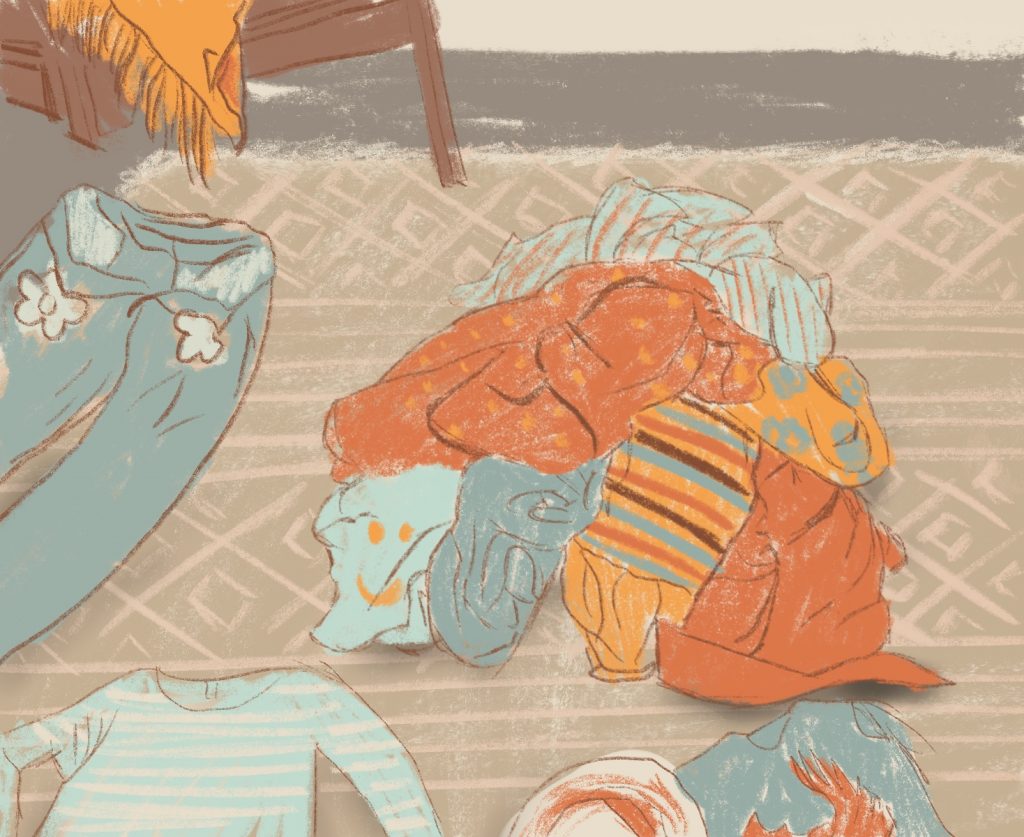With thrifting becoming increasingly popular, it begs the question if it is really as ethical and sustainable as we are led to believe. Last summer, TikToks discussing thrift store gentrification attracted millions of views, which opened the door to questions regarding who should shop at thrift stores, how much to buy and when thrift stores should be used. Pairing this with price gouging on reselling platforms like Depop and Poshmark left a lot of us with unanswered questions.
First off, let’s talk about fast fashion to illustrate a picture of how it is impacting the world. The Fashion Transparency Index is a tool any consumer wanting to gain insight into their favorite brands can use. The index scored 250 companies in 2020 on five different categories – policy and commitments, governance, traceability, know, show & fix and spotlight issues. These categories look at the wages the companies pay their employees, impact on the environment and commitment to human rights. Brands like Adidas, Reebok, Converse and Patagonia had some of the highest scores with H&M coming out on top, while brands like Bally, Tom Ford and Jessica Simpson all had a final score of 0.
Not only does fast fashion have an environmental impact, but it also has a terrifying effect on the employees who make the clothing. According to the Fashion Transparency Index, only five fashion brands paid their employees a livable wage. This makes it clear to the consumer that these brands’ top priority is profit, not their employees. Additionally, only 32 percent of the companies maintained gender equality in their facilities.
John Sanchez, a sophomore double-majoring in English and psychology, wrote in an email about his disagreement with the practice of many fashion companies.
“The same machines sewing your shirt together are tearing apart the lives and financial stability of people (particularly young people) in developing countries looking to make a wage in order to support themselves and their families,” Sanchez wrote. “With wages being distributed as low as possible to maintain as much profit as possible.”
Fast fashion has some of the greatest negative impacts on the environment out of any other industry. According to Water Footprint, it takes about 650 gallons of water to make one cotton T-shirt. This is enough water to keep someone hydrated for years.
“The water needed to make one T-shirt could keep you well hydrated for close to three years,” Sanchez wrote. “The environment is already suffering and fast fashion is not fixing the problem. In sustaining a business model, brand name clothing companies and fashion designers have refused to sustain the planet all in the name of profit.”
Where does this lead us? We all need to wear clothes and many of us want to keep up with trends. Thrifting might just be the answer. But while it might help to alleviate environmental effects, there are still concerns about whether or not increased thrifting could affect disenfranchised groups. Fashion trends often come back into style a decade or two after when they were first created. Early 2000s trends like flare jeans, bright colors and trucker hats have been at the forefront of fashion since last semester. However, this has led sellers on platforms like Depop to upsell these items for insane prices. A quick search of “Y2K” on Depop will showcase thousands of items — including a kid’s “Powerpuff Girls” t-shirt that costs $65. Surely, the seller needs to cover the cost of the item, their time and shipping costs, but $65 for a child’s size t-shirt seems outlandish.
Zachary Aleba, a senior majoring in English, discussed how platforms like Depop open the door for capitalistic practices.
“Platforms like Depop and Poshmark didn’t create a climate that prioritizes profit, but they certainly participate in a capitalist system, and this probably greatly influences their motivations and priorities,” Aleba wrote.
However, poor business practices on Depop should not detract from the benefits of thrifting. With three out of five garments ending up in landfills, thrifting will help to alleviate this problem.
Olivia Le, a junior majoring in business administration, started the Instagram account @binghamtonthrifts last March. Le gave insight on how many resellers shop ethically and still acquire enough pieces to sell.
“At least regarding resellers, I know many like myself are considerate when thrifting,” Le said. “For instance, I try to purchase off-season items so I am not taking away clothes that those in need may be dependent on. Overall, in terms of the increase in thrift shoppers, I find that this a great first step in society becoming more sustainable and everyone should start thrifting”.
Anna Schonberg, a junior majoring in environmental studies and owner of an Instagram and Depop store called Hot Bitch Thrift, lobbies for more people to thrift.
“With these giant companies, who underpay their workers and are creating new stuff constantly, while living in a consumption-based society,” Schonberg said. “And people will say there is no ethical consumption under capitalism, but there are obviously more ethical options. Thrifting is the better option”.
With thrifting becoming popularized, it clearly has opened the door for bad business practices. However, it should not be overlooked, as it is a much more sustainable option to fast fashion. Shop for clothing you know you’ll need during off-seasons, make sure to leave plenty of winter clothing for people who might not have resources to obtain it otherwise and if you are going to resell, make sure to price pieces fairly. All in all, thrifting is a fantastic option to mainstream clothing stores, but should not be exploited.



